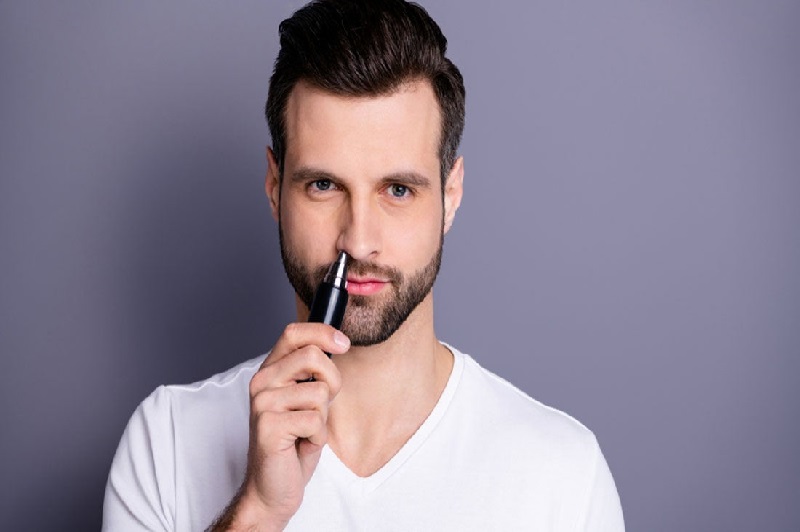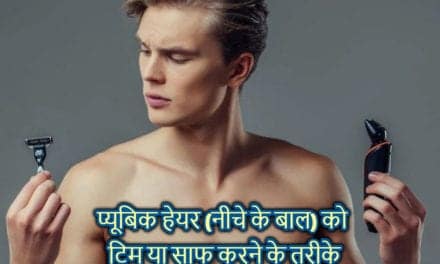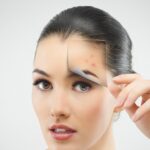Nose hair is a natural part of the human body that acts as a defense system. Nose hairs flush out harmful debris from the body’s systems and retain moisture in the air we breathe.
The blood vessels in the nose and face are extra dense. In the nose, they support hair growth. Nose hairs perform a useful function.
(Learn – Home remedies for runny nose)
You can decide whether you want to remove it for personal or cultural reasons. Today in this article we are going to tell you how to remove nose hair –
Nose hair removal Tips
Laser hair removal
- Laser hair removal is a permanent treatment for unwanted hair all over the body.
- Laser treatment for nose hair is controversial as it can injure the mucous membrane inside the nasal cavity.
- Laser treatment for prone-to-nose hairs targets only the most visible hairs around the inner edge of the nostrils.
- This makes the nose hair less noticeable and prevents it from hanging out of the nose.
- Laser treatment is the most expensive option of all hair removal.
- Find a doctor with experience and take a consultation before proceeding with any treatment.
(How to shorten pubic hair? Read here)
Nose trimmer
- Shortening your nose hair is one of the easiest and safest ways.
- Most of the small catches can be used for this.
- If you buy a grooming kit, then you can get it in it.
- The tip of such small catches is round, with the help of which the skin is protected from damage.
- An alternative way to trim your nose hair is with an electric nose trimmer.
- The electric nose trimmer is made with a rounded razor.
- Trimming your nose hairs results in only one till the hair grows long again.
- Credibility is not the only permanent solution but it is one of the safest ways.
(What to do if there is a white spot on the face? – Learn more)
To shorten the hair of the nose-
- Stand in front of the mirror and keep in mind that the light is good.
- First of all, clean the nose and remove the frozen debris inside.
- Holding the tip of your nose, lift the scissors.
- After this, shorten the braided hair.
- After the bite, clean the nose again with water.
- Sink the nose again and shorten it when the hair appears to have grown again.
- Don’t look at shortening all the nose hair.
- Pay attention to the slicked-back, thin hair.
Waxing or stretching
- In most cases, waxing or plucking nose hair is not recommended.
- Pulling out individual hairs can lead to ingrown hairs and infections.
- Waxing in particular can injure the skin deep inside your nose.
- However, there is a nose wax product on the market that is designed to remove the hair inside the sides of the nostrils. Its results can last for about four weeks.
- It lasts longer than trimming because waxing doesn’t just cut short hair.
- Instead, it removes the entire hair shaft from below the skin line.
- If you use wax to remove nose hair at home, be sure to read and follow the directions exactly.
- If the area is swollen or swollen after waxing, moisten a towel with warm water and place it on the area.
- This hot compress can provide pain relief and aid healing.
(What is half moon on nails? what did it tell you about your health!)
Avoid the following
- Depilatory or hair removal creams are not recommended for use in the nasal cavity.
- Depilatories are very strong and you run the risk of inhaling toxic fumes and burning the mucous membranes inside your nose.
- Some natural products may exist that can cause thinning nose hair but read all product directions very closely.
- Most depilatory cream labels indicate that they are not safe to use on nasal hairs.
(Know – What are the side effects of laser hair removal)
Is it safe to remove nose hair?
- Depending on your method, it may be safe to trim, thin, and remove nose hair, but you shouldn’t overdo it.
- Because nose hairs perform an important function in your body, it should not be changed too much.
- Nose hairs reduce allergies and infections from entering your body.
- Nose hairs also help to add and retain moisture in the air you breathe.
- These benefits are especially important for anyone with allergies or asthma.
- Removal of nose hairs can lead to possible complications such as pain, ingrown hairs, damage to mucus membranes, inhalation of frozen debris in the windpipe.
(Learn about the treatment of mucus in the chest)
Ingrown nose hair
- Ingrown hair is a shaft of hair that retracts and then grows back into the skin.
- Removing body hair increases the risk of developing ingrown hairs.
- Its symptoms may include pain, redness, itching, pus bumps.
- For its treatment, it is necessary to immediately stop the use of any type of hair removal.
- Cleanse the skin with warm water and a clean cloth.
- Swirl in a circular motion to remove hair.
- If there is a risk of infection if the symptoms worsen, then contact the doctor immediately.
Lastly
Nose hair is a natural, important part of everybody. If you don’t want your nose hair to be too visible, there are safe ways to reduce nose hair. The safest way is to trim the nose hair with special scissors.
There are other methods you can try as well, but they may not be as safe as using scissors or an electric trimmer.
(Learn – what is the process of wound healing)
A professional barber, dermatologist, or plastic surgeon can give the best advice and support to remove nose hair at home or with medical treatment.
References –






















 English
English हिन्दी
हिन्दी








